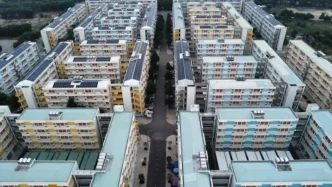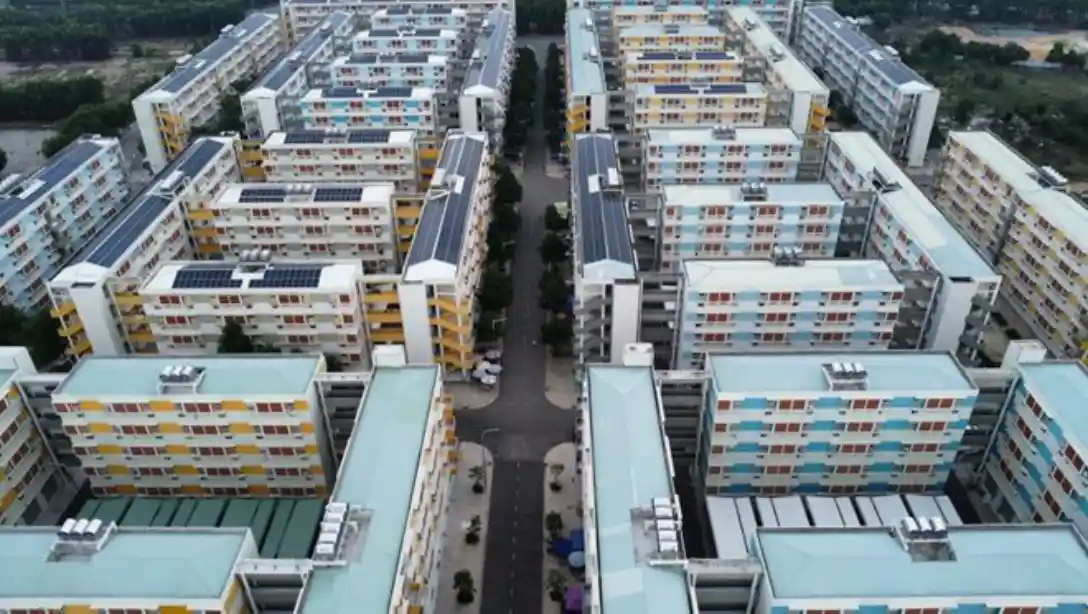In a landmark move, Vietnam’s National Assembly passed a resolution on May 29, 2025, introducing pilot mechanisms and policies to fast-track the development of social housing nationwide. This decision signals a pivotal shift in the government’s strategy to tackle the persistent housing crisis affecting low-income citizens and workers, a challenge deeply rooted in the country’s rapid urbanization and economic disparities. With housing enshrined as a constitutional right, the state is intensifying efforts to ensure that no one is left behind, but significant hurdles remain in translating policy into tangible results.
A Constitutional Commitment to Housing
The right to housing is a cornerstone of Vietnam’s legal framework, embedded in the 2013 Constitution of the Socialist Republic of Vietnam. This foundational principle, adopted on November 28, 2013, guarantees citizens legal accommodation and protects the inviolability of their homes. It has guided successive government policies aimed at addressing housing shortages, particularly for low-income groups who often find themselves priced out of urban markets. As Vietnam urbanizes at a breakneck pace, ensuring access to affordable housing has become not just a social welfare issue, but a critical component of national stability and equitable growth.
Over the years, the government has rolled out various initiatives to bridge the housing gap. Yet, the challenges are stark. A persistent mismatch between supply and demand leaves many without viable options, while escalating property prices exacerbate the crisis. In major cities like Hanoi and Ho Chi Minh City, housing costs ranging from 40 to 50 million Vietnamese Dong (US$1,550-1,940) per square meter are far beyond the reach of the average resident. With annual incomes averaging US$3,800 in Hanoi and US$7,600 in Ho Chi Minh City, it could take over 50 years of savings to afford a private home, placing Vietnam among Southeast Asia’s leaders in housing-to-income disparity.
Financial Tools and Their Limitations
To combat these issues, the government launched a substantial loan package two years ago, initially valued at 120 trillion Vietnamese Dong, later increased to 145 trillion Dong (US$5.6 billion). Funded by commercial banks, this initiative aimed to provide low-interest loans to facilitate access to social housing. The promise was significant: affordable financing could empower citizens to secure homes and spur developers to build more units. However, the reality has been sobering. To date, only about 4 trillion Dong—less than 3 percent of the total—has been disbursed, highlighting systemic inefficiencies.
Several factors contribute to this sluggish progress. A primary issue is the limited supply of social housing projects, with many localities failing to clearly identify or publicize eligible developments. Both citizens and businesses grapple with bureaucratic red tape and a lack of accessible information, hindering participation. Moreover, the loan conditions often prove too stringent for low-income individuals who struggle to demonstrate repayment capacity, despite their pressing need. Even with adjusted interest rates, the terms remain unappealing to both prospective homeowners and developers, stalling the program’s impact.
The Ministry of Construction has proposed measures to accelerate disbursement, including greater transparency in project listings and more flexible credit policies. One notable suggestion is to exclude social housing loans from banks’ credit growth limits, potentially easing financial constraints. The success of this loan package is critical, not only to meet the ambitious target of one million social housing units by 2030 but also to reinforce the government’s pledge to uphold housing rights amid rapid urban expansion.
Legal Reforms and Broader Eligibility
Complementing financial efforts, the amended Housing Law, effective from January 2025, represents a major stride in Vietnam’s social welfare policy. This legislation expands eligibility for social housing to encompass a wider range of vulnerable groups, including veterans, low-income households, workers, students, and others. By establishing clear, transparent criteria for access, the law seeks to ensure that support reaches those who need it most. It also introduces diverse development models, encouraging public investment alongside participation from domestic and foreign enterprises, as well as initiatives by organizations like the Vietnam General Confederation of Labour to provide rental housing for workers.
While the Housing Law provides a robust legal framework, implementation challenges persist. The reliance on commercial banks for the 145 trillion Dong loan package, rather than direct state funding, has led to delays due to complex banking requirements. Recognizing these shortcomings, the government issued a special resolution on June 1, 2025, aimed at dismantling legal, procedural, and financial barriers to social housing development. This resolution is built on three key pillars: proper planning, real incentives, and accurate targeting, ensuring that social housing is integrated into urban areas with access to essential infrastructure such as transport, healthcare, and education.
Innovative Policies for Faster Progress
Prime Minister Phạm Minh Chính has emphasized the importance of location in social housing projects, insisting that they be situated in well-connected areas rather than remote outskirts. The recent resolution introduces several innovative measures to expedite development. Certain projects can now bypass the bidding process, saving developers time and costs, while streamlined planning and approval procedures aim to accelerate construction timelines. Additionally, the resolution proposes the creation of a National Housing Fund to offer long-term, stable financing, reducing dependence on slow and unpredictable commercial loans.
Further provisions address practical obstacles such as compensation, land clearance, and infrastructure development for social housing initiatives. Local authorities gain greater flexibility to determine eligibility, enabling them to tailor support to community-specific needs. For investors, the resolution cuts through bureaucratic hurdles by allowing land allocation without bidding for select projects and offering enhanced tax, credit, and infrastructure incentives. A fairer profit margin mechanism is also under consideration to attract private developers, balancing profitability with social responsibility.
For homebuyers and renters, the resolution simplifies procedures, making access to housing support more straightforward. Local authorities are empowered to identify and assist those in need, including workers living far from employment hubs, ensuring that policies are responsive to real-world conditions.
Global Lessons and Local Realities
Vietnam’s push for affordable housing aligns with global efforts to address similar challenges. Countries like Singapore and Sweden have demonstrated the efficacy of robust public housing systems, with government-backed initiatives ensuring access through subsidies and low-interest loans. In the United States, programs like the Housing Choice Voucher (Section 8) and Low-Income Housing Tax Credit support renters and developers alike. Germany and South Korea offer subsidized loans and incentives to balance market dynamics with social needs. While Vietnam’s context differs, these international models underscore the value of sustained state intervention and stakeholder collaboration—approaches that could inform the country’s path forward.
Domestically, the government has floated the idea of reviving a funding model akin to the 30 trillion Dong package launched in 2015, which was state-funded and offered favorable interest rates. In contrast, the current reliance on commercial banks for the 145 trillion Dong scheme has exposed procedural bottlenecks. Encouraging banks to prioritize social responsibility alongside profitability could unlock faster disbursement, while the proposed National Housing Fund offers a potential long-term solution to financing woes.
The Road Ahead: Challenges and Opportunities
Vietnam’s focus on affordable housing is a linchpin for social stability and sustainable urban development. Social housing not only addresses immediate needs but also strengthens the country’s economic and social infrastructure. However, the success of these ambitious policies hinges on effective implementation at the local level. Strong leadership and commitment are essential to navigate the complexities of rapid urbanization and ensure that initiatives translate into real homes for those in need.
Collaboration between the state, market mechanisms, and stakeholders will be crucial. As Vietnam looks to the future, planning for an evolving affordable housing sector—mirroring trends in developed nations—could position the country as a regional leader in equitable urban growth. For now, as these reforms unfold, the question remains whether the government can overcome entrenched challenges to deliver on its promise of housing for all, turning constitutional rights into lived realities for millions of citizens.
















